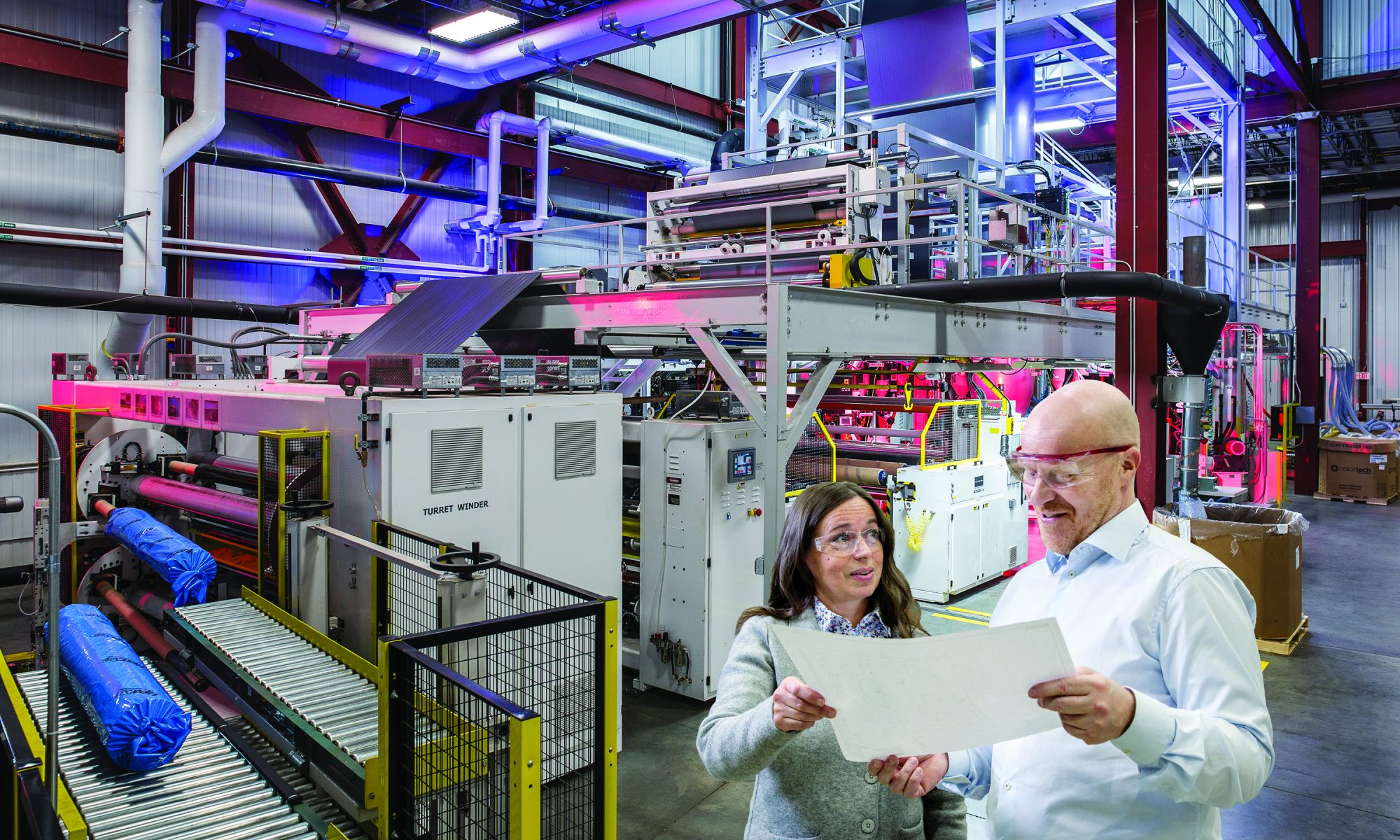
The COVID-19 pandemic has certainly put a spotlight on the importance of hygienic and protective films. These films have become essential to limiting the spread of the virus and in many cases, saving lives. Additional demand requires global processors to keep their blown film operations running as efficiently as possible. Producing single and multi-layer blown film structures with excellent film uniformity, high-tensile strength and reliable barrier properties leave little room for error. To support product consistency, limited waste and reduced downtime, we’ve put together a list of common blown film issues and how to troubleshoot them.
Issue: Gels, un-melts, charred polymer
Cause: Overheated/degraded polymer, poor melting, foreign objects in resin stream
Troubleshooting:
-
- Reduce melt temperature, or if un-melts, increase extruder barrel temperatures
- Check thermocouple installation and ensure accurate heater control
- Worn or damaged extruder screw; inspect and measure screw dimensions
- Worn or damaged extruder barrel; inspect and measure barrel ID
- Check resins and material handling for foreign contamination, angel hair, fluff, etc.
Issue: Melt fracture “Sharkskin”
Cause: Melt temperature too low or die gap too narrow
Troubleshooting:
-
- Raise melt temperature (if possible)
- Raise die lip temperature
- Activate die lip heaters if quipped
- Increase die gap
- As a last resort, consider adding PPA (polymer processing additive)
Issue: Poor or non-uniform optical clarity
Cause: Inadequate extrudate quenching
Troubleshooting:
-
- Extrudate melt temperature may be too low; raise melt temperature.
- Non-uniform die heating; check heaters and thermocouples
- IBC air leaks; ensure IBC supply and exhaust tubes are properly seated
- Airflow to external/internal air ring not uniform; check that the air ring(s) are centered. Inspect for blocked supply lines, dirty coil filters, missing insulation, dirty/blocked plenums/screens
- Co-extrusion interfacial instabilities; adjust layer thicknesses via extruder outputs or substitute different resin with a higher/lower MI
Issue: Voids, “raindrops,” or gray streaks
Cause: Indicates potential moisture in resin stream
Troubleshooting:
-
- Identify the cause of moisture in the material handling system
- Check water condensation on the extruder feed section (hot, humid environment)
- Ensure raw materials are dry; check moisture content with heated moisture balance
- Ensure dryer, if used, is functioning properly
Issue: Milky areas
Cause: Indicates contamination by an incompatible polymer
Troubleshooting:
-
- Identify where the contamination is occurring and eliminate it
- Clean/purge the resin material handling system, hopper and dryer
- Purge extruder, screen changer, melt pipe and die with an un-blended neat-base resin
- Disassemble and clean the extruder barrel, feedscrew, screen changer, melt pipe and die (if needed)
Issue: Discoloration
Cause: Indicates the extrudate melt temperature is too high
Troubleshooting:
-
- Lower the barrel temperature to recommended levels
Issue: Poor pigment dispersion
Cause: Indicates poor mixing or uneven melting
Troubleshooting:
-
- Residence time inadequate for accurate mixing; increase backpressure/residence time
- Melt temperature inadequate for accurate mixing; lower temperature to increase shear
- Inspect blending dosing unit for accurate/consistent color masterbatch feeding
- Evaluate the feedscrew design; change or modify if needed
- Evaluate the resin rheology compatibility
Issue: Gauge bands, die lines, film lines
Cause: Indicates contamination at die lips, die adjustment issues, uncontrolled localized tension, non-uniform cooling
Troubleshooting:
-
- Die lip is dirty; clean (shim) die lips at localized lines
- Die is dirty; purge, clean and inspect die
- Die lip out of adjustment; check die gap and re-gap
- Inspect internal/external air rings for proper centering, blockages, leaks and localized high/low air velocities; re-adjust as needed
- Ensure die is centered under bubble cage(s); collapsing frames are centered; nip roll is centered and that when closed, a nip impression shows a uniform nipping gap between the rubber roll and chrome roll
- Check to see if all transport rollers rotate freely; do non-uniform tensions exist?
- Identify and eliminate external influences such as drafts
Issue: Wrinkles prior to the nip roll
Cause: A non-uniform extrusion process starting upstream of the nip
Troubleshooting:
-
- Is the bubble breathing? Confirm the extrusion process is stable; output, melt temperature and die pressure should be consistent
- Bubble still breathing? Check the frost line; is it uniform and stable? If not, check the location of IBC sensors to see if they are too far below or above the frost line
- Is the air ring properly centered and adjusted to stabilize the bubble?
- Is the chilled air temperature consistent? Check blower stability, chiller temp, cooling coils; look for blocked/crimped/missing supply hoses
- Is the bubble cage too tight? Check for bubble breathing; ensure the cage is centered and there is sufficient contact with the bubble. Make sure rollers and the bubble contact surface is clean and uniform
- Is the bubble cage too loose? If it moves from side to side or makes a hula-hoop motion, bring the cage in
- Is the collapsing frame angle too large? If there are edge wrinkles, decrease the collapsing frame angle
- Is the collapsing frame angle too small? If there are center wrinkles, increase the collapsing frame angle
- Are there lightning bolt wrinkles? Check the nip roll diameter variation from side-to-side and nip-pressure variation. Uneven pull from narrow drive rollers or side guides can also cause these wrinkles
Issue: Film blocking
Cause: Indicates the winding tension or corona treatment level may be too high
Troubleshooting:
-
- Reduce winding tension
- Lessen treatment levels
- Inadequate film cooling; reduce cooling roll temperature or reduce line speed
- Inadequate levels of anti-block additive; increase anti-block
Questions about this blog? Comment below.
If you need assistance with your blown film line, don’t hesitate to contact our service team at (844 MYDAVIS). For any other questions, e-mail marketing.
Stay safe and healthy!
Cheers,
The D-S Connect Blog Team
